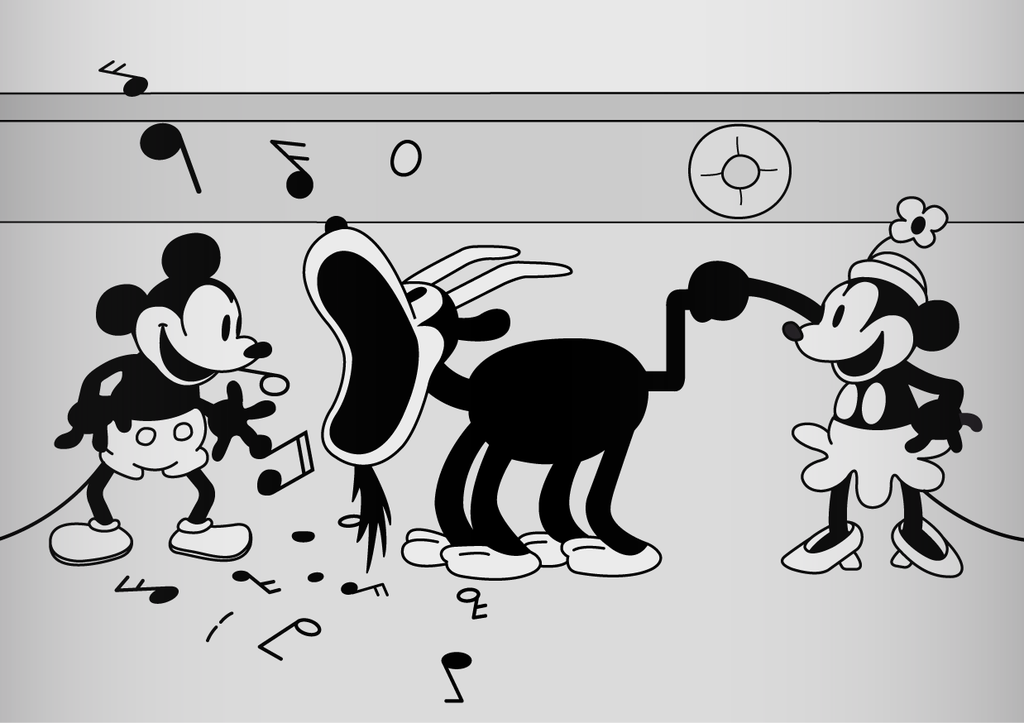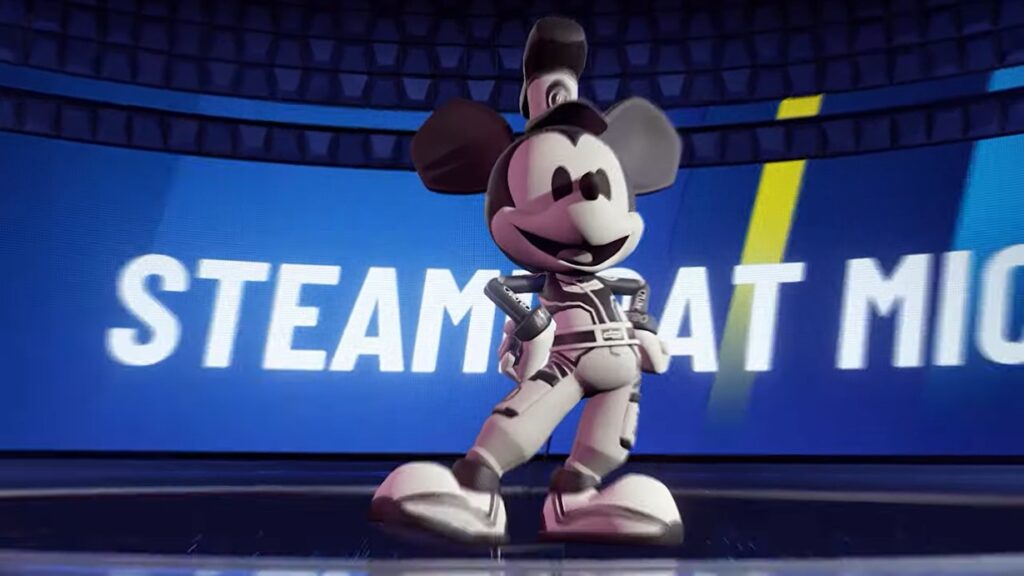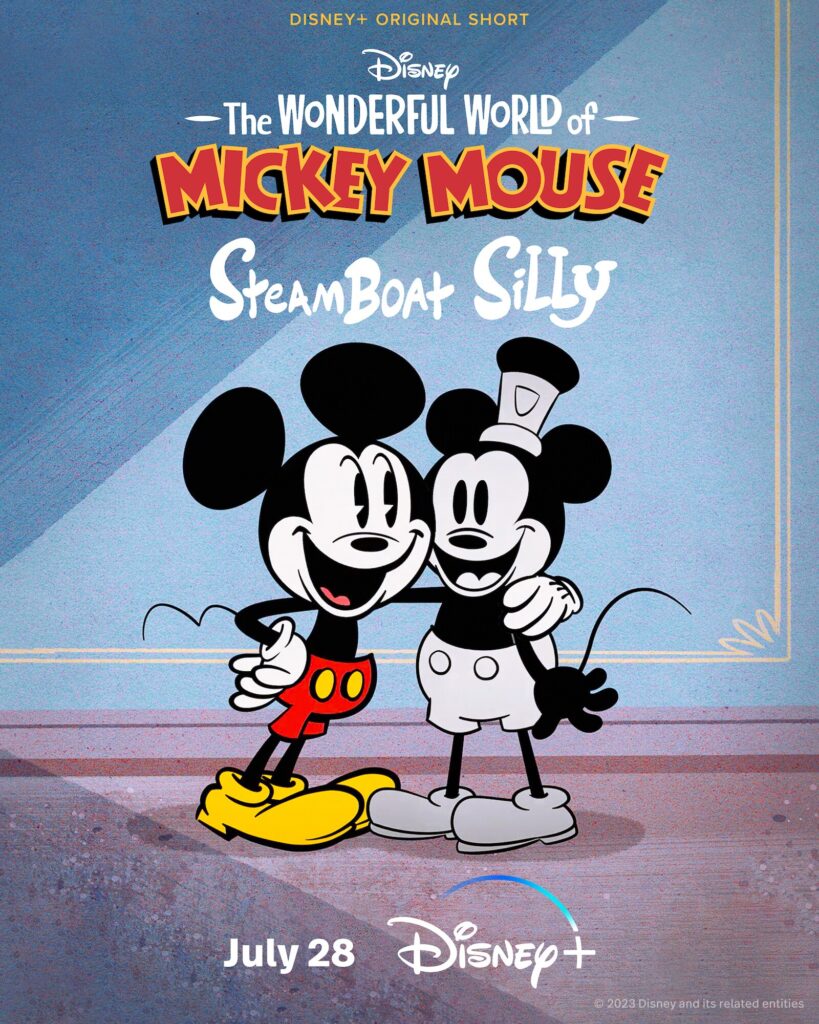It’s finally happened. The Mickey Mouse copyright has entered the public domain. You, and everyone else, now owns Mickey Mouse – with some caveats.

The public domain is a wonderful idea. Artists are allowed to profit from their creations, and then after a period of time the work enters the public domain where it can then be retold, remixed, and generally reused by anyone. New ideas are created, and culture is expanded.
Of course, the ideas behind the public domain come from a very different time, one where singular authors wrote stories and then died, whereas now larger corporations are less mortal than humans. Corporations like Disney who would continue using a character like Mickey Mouse for generations didn’t exist back then.
This has created a problem for the last few decades. Disney’s efforts to protect the mouse from entering the public domain have led to copyright lengths getting longer and longer. This has led to a period of time where relatively few new works have entered the public domain.
That changed today though. Despite Disney’s past efforts, Mickey Mouse’s first published cartoon, “Steamboat Willie”, has entered the public domain.
So what does this mean? How did we get here? Let’s get into it.
The Purpose and Length of Copyright
Before we get started, let’s consider the original purposes of copyright protection (and intellectual property generally) and how Disney has historically influenced it to protect Mickey Mouse.
Note that this all applies to United States IP law. Things may be different where you live, and you might not have the same public domain rules or time tables in different countries. Check with local council before moving ahead too far with your own work.
Copyright Exists to Promote the Useful Arts
Copyright allows the creator of a work to have the exclusive right over their work. As I’ve stated before on this blog, copyright is not the right to make copies of your work, it’s the right to exclude others from using your work. If you’ve created an original work of authorship, you have the right to stop others from using your work.
This applies not just to works that can be protected by copyright, but also to individual characters. Courts have held that so long as a character (or vehicle, as was the case for the Batmobile1 has sufficiently delineated and consistent character traits that are especially distinctive and contain some unique elements of expression, they can be protected by copyright. In other words, Disney can not only protect their Steamboat Willie cartoon but also the character of Mickey Mouse that appears in it.
This is good news for creators. It takes a lot of work to create something artistic, whether that’s a game, a film, a piece of music, a book, or anything else creative. However, while the initial creative cost is high, the marginal cost of one more copy of whatever you’ve created is very low, essentially zero for digital works. Copyright ensures that whatever you create can’t be redistributed or reused by other people or companies who haven’t put in that initial creative cost.
“To promote the Progress of Science and useful Arts, by securing for limited Times to Authors and Inventors the exclusive Right to their respective Writings and Discoveries”
United States Constitution, article I, Section 8, Clause 8
Copyright (and other intellectual property) laws have another purpose. That is to “promote the progress of Science and useful Arts.”
This whole story is a bit ironic when you consider Disney’s early history. Many of their movies, including Cinderella, Aladdin, Beauty and the Beast, The Jungle Book, The Little Mermaid, Peter Pan, Robin Hood, and many more were based on works from the public domain for which copyright protection had expired, while others like Frozen were more loosely inspired by public domain works. Even some of Disney’s more original films like Fantasia make use of musical scores from classical pieces that are in the public domain.
The History of Copyright Length: The “Mickey Mouse Protection Act”
Despite this relationship with the public domain, Disney has gone to great lengths to ensure that Mickey Mouse avoided the public domain until today.
Copyright has a limited term. Once that expires, anyone can take that work and reproduce or reuse it without permission from the original author or copyright holder. Steamboat Willie, the first Mickey Mouse cartoon published (but not the first created!) was released in 1928. At the time, copyright protection extended for 56 years after the time of first publication under the Copyright Act of 1909. This would mean that Steamboat Willie would enter the public domain in 1984.
Disney began efforts in the 1960s to lobby Congress to amend the existing copyright laws. Congress eventually passed the Copyright Act of 1976 which substantially extended copyright to the life of the author plus 50 years or a static 75-year term for anonymous works, pseudonymous works, and works made for hire. This meant that Steamboat Willie would now enter the public domain in 2003. For this reason, the act is sometimes derisively referred to as the “Mickey Mouse Protection Act.”
To be clear, the Copyright Act of 1976 did much more than extend copyright over Mickey and other characters. It also cleaned up a lot of the language, defined the subject matter of copyright, better defined copyright protections over musical compositions and sound recordings, better defined what the rights of copyright holders are, codified fair use, and more.
Disney went on to lobby Congress again in 1998 to extend copyright protection for 20 more years for works created before 1978. This extension put Steamboat Willie’s copyright protection through 2023, which means that Steamboat Willie has now expired as of January 1, 2024.
What Does Steamboat Willie and Mickey Mouse in the Public Domain Mean?
Now that Steamboat Willie (and by extension the character of Mickey Mouse that appeared in that cartoon) has entered the public domain, what does this actually mean for creators?
The short answer is that you can now copy, share, and build on Steamboat Willie and its characters without Disney’s permission. Planning to use the original cartoon in some creative new way? Go for it. Want to republish it on your own with no alterations? Sure. Want to use the character of Mickey Mouse in your game, movie, book, or other creative work? It’s in the public domain, that’s something you can do.
You’d no longer be producing an unlicensed fan work, you’re just using things that are freely accessible to everyone, not unlike what Disney did in a lot of their own movies.
However, there are a few caveats to be aware of.
A Version of Mickey Mouse has Entered the Public Domain, Not Every Version
Characters can be protected by copyright. When the work a character appears in enters the public domain, so does the character. A character entering the public domain is exactly how intellectual property is supposed to function. Now that Mickey is in the public domain, you can use the character in your own work.
That said, while the version of Mickey Mouse that appeared in the Steamboat Willie cartoon has entered the public domain, not every version of Mickey Mouse has. While in theory you’ll be free to use that specific version of the character, Disney will certainly argue that the Mickey Mouse that appears later is a distinct and separate character with separately delineated and consistent character traits.
Exactly which character traits are fair game will likely be a question for the courts to settle in many cases. It can get a little bit weird to consider what character traits constitute a particular iteration of a character, especially for a character with as long of a history as Mickey. It’s very fact-intensive and varies by case, which could be the topic of an entirely separate post.
This situation will likely be similar to the one that the character of Sherlock Holmes was in where some traits of the character were in the public domain, but traits from stories published after 1923 were not. Using character traits from those stories could still lead to actions by the estate of Sir Arthur Conan Doyle.
It could even be argued that Disney has made some efforts to distinguish the version of Mickey Mouse that appears in Steamboat Willie as a distinct character.

The Sega CD and PlayStation versions of the 1994 video game Mickey Mania featured multiple incarnations of Mickey Mouse, including the one from Steamboat Willie, teaming up to fight Pete. The more recently released racing game Disney Speedstorm features Mickey Mouse and Steamboat Mickey as two separate characters that can race against one another.
Outside of video games, an episode of The Wonderful World of Mickey Mouse released in 2023 (about six months before copyright in Steamboat Willie was set to expire!) titled Steamboat Silly featured Mickey Mouse alongside the Steamboat Willie version of the character. This would seemingly have been done to explicitly make those two versions of the character separate from one another, allowing copyright protection to lapse over the Steamboat version of Mickey while setting up the argument that modern Mickey is a separate character.

All of this is to say that while copyright may have expired for some versions of the character, you should take caution when using the character in new ways to avoid using later versions of Mickey Mouse and stick to the classic character.
Disney will certainly be proactive about protecting Mickey Mouse as best as they can. In a statement the company said that “[They] will, of course, continue to protect [their] rights in the more modern versions of Mickey Mouse and other works that remain subject to copyright.”
Additionally, characters that are Mickey-adjacent that appeared in later cartoons are still protected, like Donald Duck (who enters the public domain in 2029) and Goofy (who enters the public domain in 2027). This is similar to the situation where Winnie the Pooh entered the public domain in 2022, but his friend Tigger who appeared later only entered the public domain in 2024 alongside Mickey.
You Still Can’t Use the Mickey Mouse as a Part of a Trademark
While Copyright has a limited term, trademark does not. Mickey Mouse is still protected by trademark!
Trademark involves the use of certain protected elements as part of an identification of source. Trademark protection extends forever, so long as the trademark holder is still using it. So while Steamboat Mickey is probably fair game for use in other media, be careful with the iconic mouse ears logo.
Trademark protections only prohibit the use of a trademarked character (such as Mickey Mouse in this case) if doing so is likely to cause confusion about the source of the product, or is used to deceive consumers about the source or sponsorship of your product. Disney has a number of registered trademarks that include the character of Mickey Mouse. They have even started to use a clip of Steamboat Willie as part of its branding for Walt Disney Animation Studios that plays before their films.
Could Disney use trademark law as an effective perpetual copyright? Probably not, since the Supreme Court has ruled that trademark can’t be used to do that, but they certainly could still try under some circumstances.
Since trademark protection still exists over Mickey Mouse, you should take some degree of caution if you decide to use such an iconic character in your work. Don’t use Mickey in your logo or any other part of your branding. It’s also a good practice to include some sort of disclaimer that your work is not associated with or endorsed by Disney to avoid any confusion. The last thing you want is to hear from Disney that your work is creating confusion by using their trademarks.
Conclusion
I fully expect to see derivative works based on Mickey Mouse in the coming months of various degrees of quality. This morning, within hours of Steamboat Willie entering the public domain, I saw an indie horror game featuring an interpretation of Mickey Mouse, probably the most predictable thing to see if you follow any indie developer subreddits.
This trend is not unlike the movie Winnie the Pooh: Blood and Honey which took another Disney character that entered the public domain and turned it into a slasher movie. Though Rhys Frake-Waterfield, the director of that movie advises against a similar approach to Mickey Mouse saying it’s much more legally risky and that a lot of projects have done some things that “they shouldn’t have done.”

It will be interesting to see what legal actions – if any – Disney takes in the coming years to maintain some control over their character and the image it carries for them.
I don’t expect big companies to make use of Mickey Mouse, at least not yet. While Epic Games is eager to include all sorts of characters as skins in Fortnite, big companies usually want to keep the door open to work with Disney in the future and being quick to use the mouse might make that conversation a bit harder.
I also don’t expect Disney to be fully silent either. Expect to see some legal challenges at some point soon, that are likely to set some interesting precedents.
Although a version of Mickey Mouse has entered the public domain, you should still take some caution. Not every version or trait of the character is necessarily fair game, and you should be careful not to use them in such a way that would imply a relationship with Disney or otherwise cause confusion.
If you’re ever in doubt, consult a lawyer and err on the side of caution.
- DC Comics v. Mark Towle, 802 F.3d 1012 (9th Cir. 2015)) ↩︎

Leave a Reply